Many of us spend countless hours, dollars and patience on a perfectly kept lawn. Watering needs can be high, fertilizing can get costly and mowing and weed whipping can take anywhere from minutes to hours, depending on the size of the yard. Of course, you may be lucky enough to have a landscaping company do the laborious work for you, but that's not to say that a lush lawn of green is your only option for a beautiful yard. From bricks to gravel and even meadows, there are various alternatives to the traditional grass-filled landscape. Read along to see for yourself.
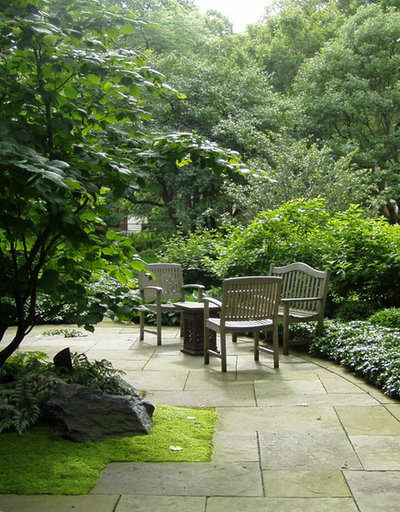
kim E. rooney
Pavers. Pre-cut slabs of cement are an easy way to cover a large area of ground without too much upkeep. They create a nice flat ground, perfect for a table and chairs.
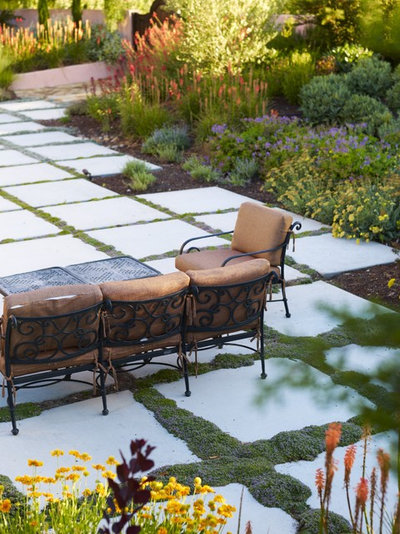
Jeffrey Gordon Smith Landscape Architecture
Alternatively, you can space your pavers a few inches apart and plant groundcover between the edges. If you are looking for a hardy groundcover, thyme may be a good option, depending on your climate zone and amount of sun or shade.
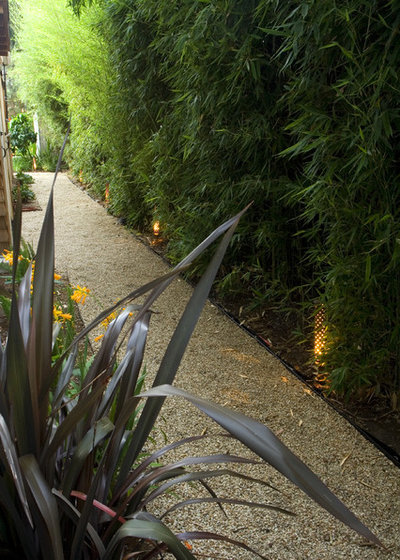
Shades Of Green Landscape Architecture
Gravel. Adding a gravel path is one of the quickest changes you can make to your landscape, gravel is easy to work with and generally leans toward the heart of budget-friendly. All it takes is a few yards of landscaping cloth, some type of edging and the ability to spread gravel.
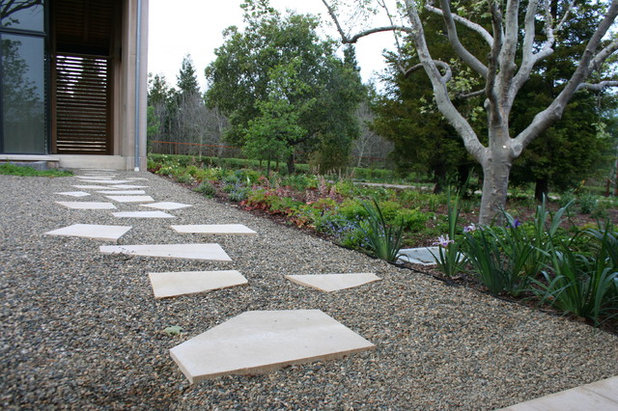
Frank & Grossman Landscape Contractors, Inc.
If you like the thought of gravel but feel that it may look too stark, try adding a path of scattered stones or pavers. Side note: you may hear that gravel has a tendency to find its way into the house if it gets in the tread of your shoes, although I have not had any personal issues with my large area of pea gravel.
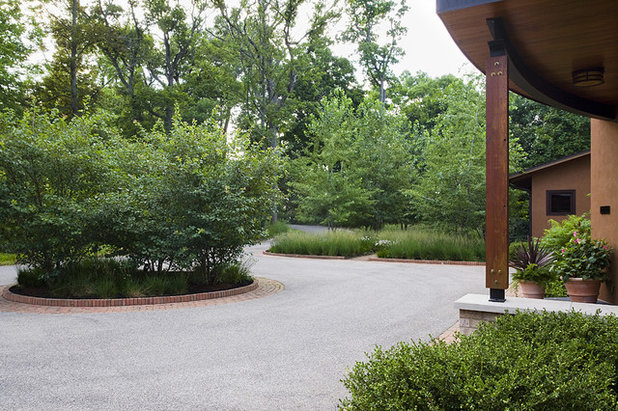
The Garden Consultants, Inc.
When it comes to edging around trees and shrubs, bricks not only keep small rocks away, but they also highlight whatever is growing within the border. This may be a good option if you have any ornamental trees that you'd like to draw interest to.

450 Architects, Inc.
Not as defined as the one in the previous photo, this gravel-rich yard goes with the flow and doesn't bother much with the hassle of edging.
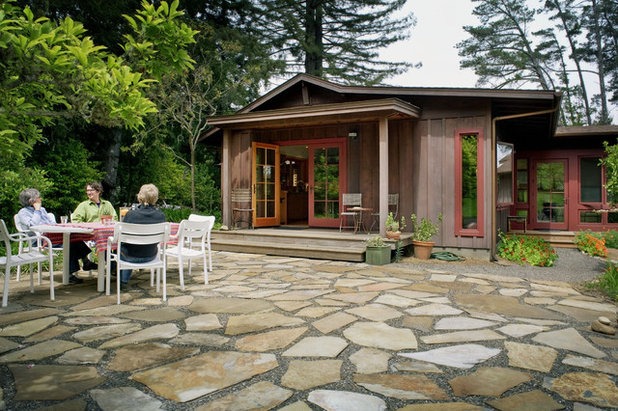
450 Architects, Inc.
Stone. Large stones such as flagstone or sandstone add warmth and texture to a landscape, although it can be the most difficult option to install. Not only are the stones quite heavy, but it's more of puzzle than anything else. Trust me when I say that perfectionism and stones don't go hand in hand.
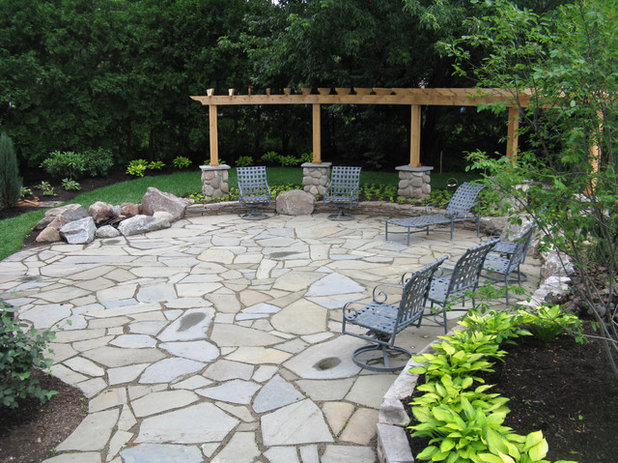
Treasured Earth Landscaping
If I haven't scared you away from the idea of installing a stone patio, and I really hope that I haven't, be sure to have leather work gloves, a good chisel and mallet, and safety glasses on hand. Having the ability to chop off any weird angles will be a huge help when it comes to arranging the pattern.
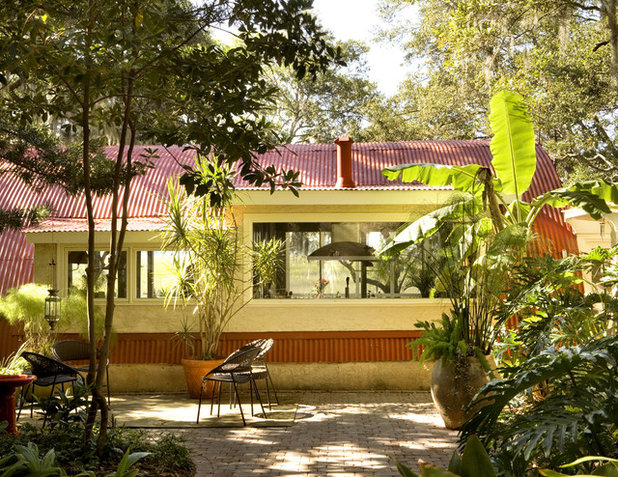
Frederick + Frederick Architects
Bricks. A classic alternative to pavers, bricks take a bit more time to install, but the extra effort will go a long way in terms of visual appeal.

Classic Nursery & Landscape Co. / Alan Burke, asla
If you think that bricks are just boring grids of rectangles, think again. This photo demonstrates that a patio of bricks can include patterns in addition to the more commonly seen straight lines.
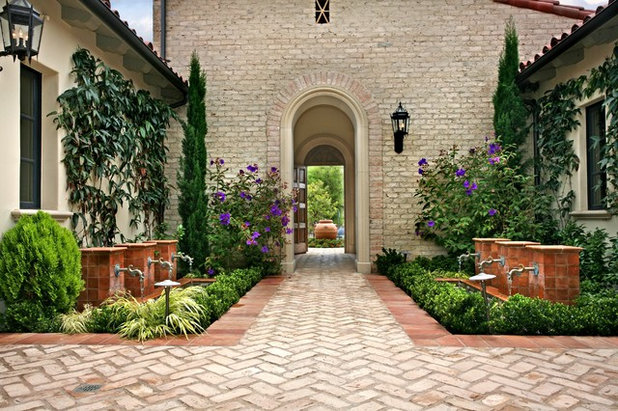
AMS Landscape Design Studios, Inc.
Another alternative to straight-laid bricks, this chevron pattern increases the aesthetics and makes this space quite charming.
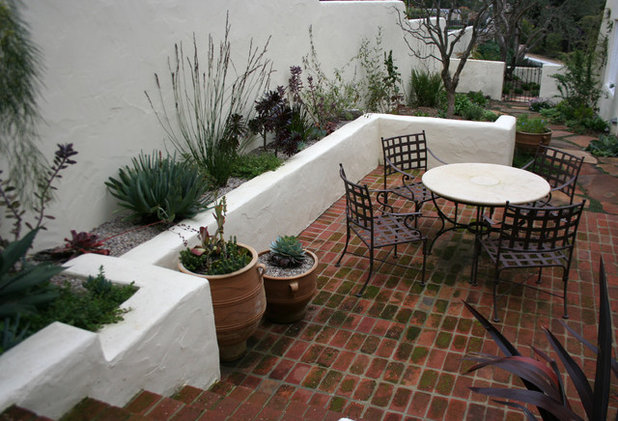
Frank & Grossman Landscape Contractors, Inc.
Mortar between the bricks will help alleviate the potential invasion of weeds — something to consider when installing a patio where these pesky plants tend to show up.
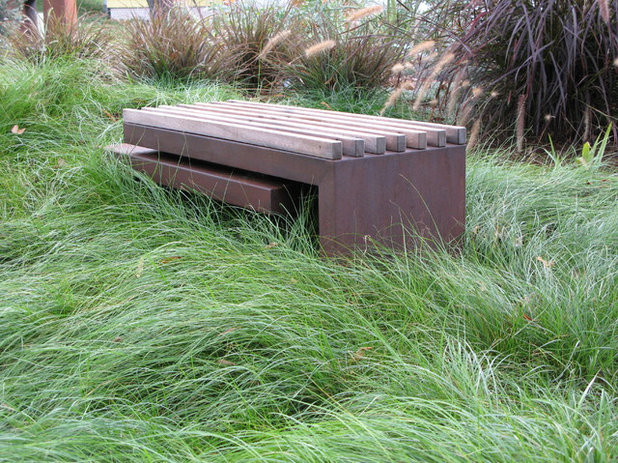
debora carl landscape design
Grasses. If you like the idea of grass but don't have time to mow the yard every week, ornamental grass may be a good alternative. The long, wispy blades will rustle softly in the breeze.
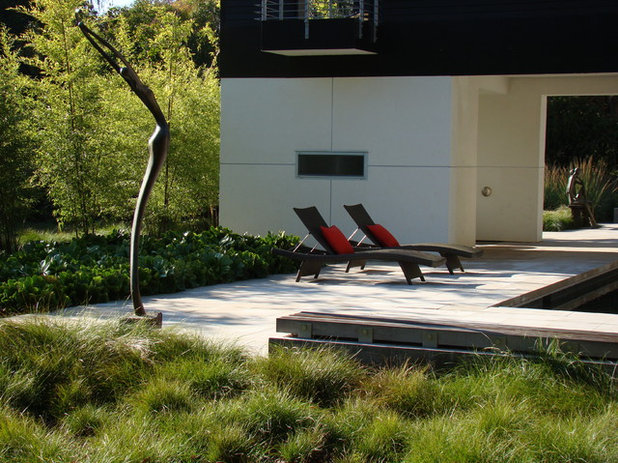
Randy Thueme Design Inc. - Landscape Architecture
Not only does ornamental grass give you a break from mowing, but it also offers more texture and visual interest than a manicured lawn ever will.

PLACE architect ltd.
This grid of green is unique and pleasing to the eye. It's perfect for somebody who seeks to obtain a more orderly look than ornamental grasses provide.
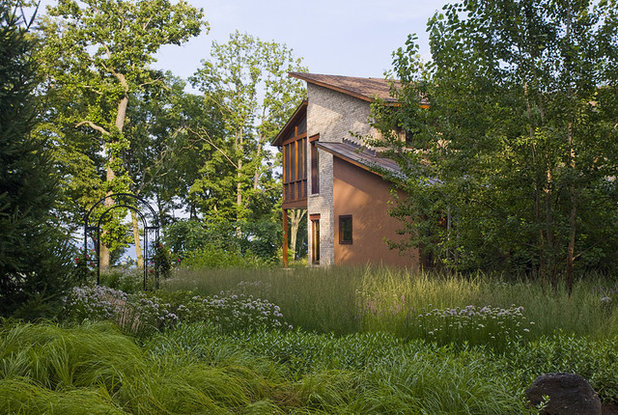
The Garden Consultants, Inc.
Meadow. Much like ornamental grass, meadows are a great solution for those of us who still want to keep things growing in our yard. These lush fields are generally composed of hardy native plants that will grow back year after year. Check out
this book if you are interested in learning more about meadows.
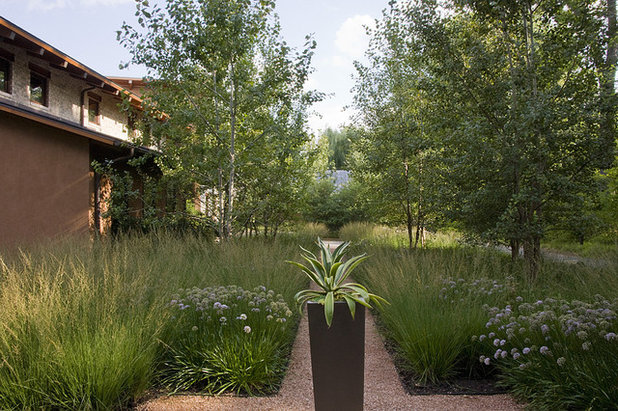
The Garden Consultants, Inc.
In addition to lending a welcome sense of serenity, meadows generally attract birds and butterflies and provide a laid-back setting for your yard.
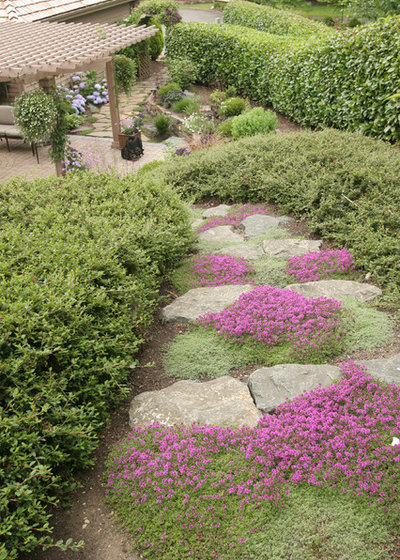
Classic Nursery & Landscape Co. / Alan Burke, asla
Groundcover. This gorgeous bed of creeping thyme may look delicate, but thyme is actually quite tough and can do just fine in low-traffic areas of the yard.
Bonus: Thyme leaves are quite fragrant and smell beautiful when walked upon.
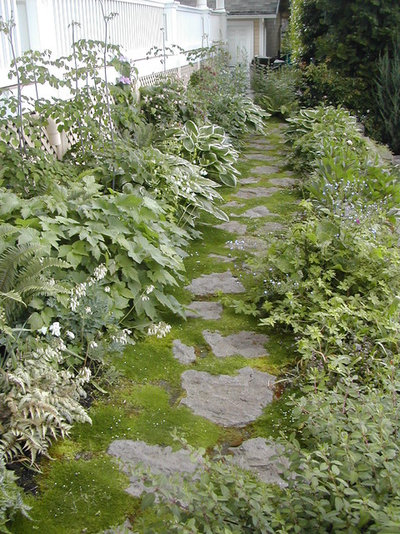
Samuel H. Williamson Associates
If there is a shady area you'd like to cover, then you have the perfect opportunity to grow a bed of moss. Moss transplants quite easily, as it is not a deeply rooted plant, although it may take a while to spread over a large area. Why not cut to the chase and cover the ground with a
moss slurry? You'll have a beautiful ground of moss in about 4-6 weeks.
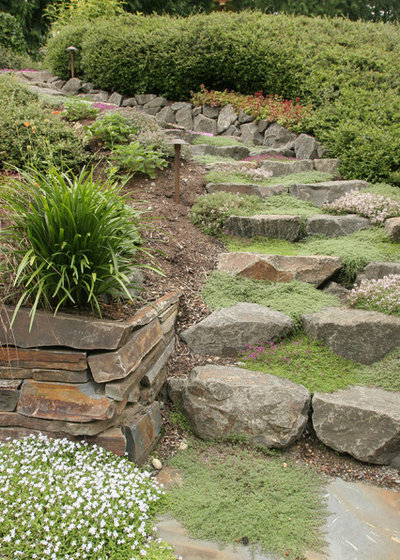
Classic Nursery & Landscape Co. / Alan Burke, asla
More groundcover between rocks: It's the ideal solution for filling gaps in your hardscape that you don't want taken over by weeds.
What are your thoughts on replacing some or all of your existing lawn with one of these grass alternatives?
More: Ornamental Grasses in the Landscape





